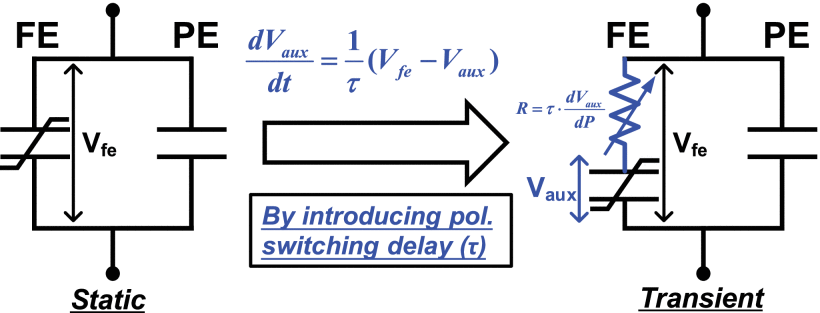Reinaldo Vega, Senior Member, IEEE, Takashi Ando*, Senior Member, IEEE,
Timothy Philip, Member, IEEE
Junction Design and Complementary Capacitance Matching
for NCFET CMOS Logic
IEEE J-EDS 2021
DOI 10.1109/JEDS.2021.3095923
IBM Research, Albany, NY 12203
* IBM T.J. Watson Research Center, Yorktown Heights,
NY 10598
Abstract: Negative capacitance field effect transistors (NCFETs) are modeled in this study, with an emphasis on junction design, implications of complementary logic, and device Vt menu enablement. Contrary to conventional MOSFET design, increased junction overlap is beneficial to NCFETs, provided the remnant polarization (Pr) is high enough. Combining broad junctions with complementary capacitance matching (CCM) in MFMIS (metal/ ferroelectric/ metal/ insulator/ semiconductor) NCFETs, it is shown that super-steep and non-hysteretic switching are not mutually exclusive, and that it is theoretically possible to achieve non-hysteretic sub-5 mV/dec SS over > 6 decades. In a CMOS circuit, due to CCM, low-Vt pairs provide steeper subthreshold swing (SS) than high-Vt pairs. Transient power/performance is also modeled, and it is shown that a DC optimal NCFET design, employing broad junctions, CCM, and a low-Vt NFET/PFET pair, does not translate to improved AC power/performance in unloaded circuits compared to a conventional FET reference. It is also shown that the same non-hysteretic DC design point is hysteretic in AC and may also lead to full polarization switching at higher voltages. Thus, a usable voltage window for AC NCFET operation forces a retreat from the DC-optimal design point.
Fig: Equivalent capacitance network and illustrative C-V curve showing NMOS and NC curves. CNC > CINV results in non-hysteretic switching, but low voltage gain in the off-state due to CNC >> COV. Setting CNC to CNC2, which is matched more closely to COV, results in very low SS, but also hysteretic switching as CNC2 < CINV.
Acknowledgment: The authors would like to thank Paul Solomon and Prof. Sayeef Salahuddin for insightful discussions, as well as Synopsys for technical support.




